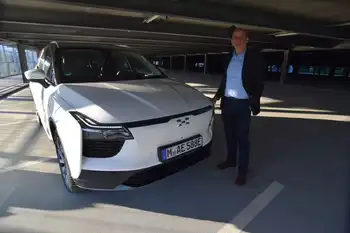U.S. clings to coal energy but wants it clean
Half of the 4,000 gigawatt electrical capacity in the world's largest economy is produced from coal, the most environmentally destructive form of power generation.
"We're going to be burning coal for many years," Fred Krupp, president of the Environmental Defense Fund, said at an annual conference sponsored by research firm Cambridge Energy Research Associates (CERA) in Houston, Texas.
The new US energy secretary, Steven Chu, said last month that "it is imperative that we figure out a way to use coal as cleanly as possible," an idea promoted by President Barack Obama during his election campaign.
Desire to find a way to make clean coal-generated power is hardly new.
The massive US conglomerate General Electric, with government support, set up a test plant in the early 1980s but it "didn't prove to be quite effective and was not competitive," Jim Suciu, head of sales for GE subsidiary GE Energy, told AFP.
But improved technology has improved the efficiency of clean coal power.
Krupp, the environmentalist, said that technology to capture carbon dioxide (CO2) to reduce harmful emissions to zero "provides a future for coal."
The French company Alstom built the first industrial-scale US coal-generated power plant using the CO2-capture technology, a modest 30-megawatt unit in Western Virginia.
The plant is expected to begin power generation this year and will serve as a real test of carbon-dioxide capture, until now only tried in even smaller plants.
A similar-sized power plant was opened in Germany in September by Swedish firm Vattenfall.
Clean coal offers advantages: the United States, like China and Australia, has abundant coal resources estimated at nearly 500 billion tonnes. According to the US Department of Energy, the world's coal resources in 2004 were equivalent to 160 years of production.
Clean coal also would support the US mining industry while at the same time responding to authorities' dual objective of reducing pollution and the country's dependence on foreign oil imports.
The technology used in the United States — chemical separation of carbon dioxide from the emissions produced by coal burning — has the added benefit of being adaptible to existing coal power plants.
However, the technology remains immature and its adaptation to power production on a grand scale would take several years, experts say.
Then there is the storage question. Ideas include injecting captured carbon dioxide into spent gas fields or rocky formations underground.
Companies face the problem of a legal vacuum about how to use the technology.
And it is expensive: Alstom estimates that carbon-capture technology eats up 10 percent to 20 percent of the production costs of a power plant.
"The question today, is not if it works, but at what price and whether governments will move swiftly enough to establish legislation that will allow it to work in a legal context that is satisfactory for everyone," said Philippe Joubert, vice president of Alstom and head of its Power Systems Sector.
"I very much doubt the large-scale application of carbon caption will be in the US," said David Hobbs, research director at CERA.
Insufficient government financing will hold the country back, Hobbs said, predicting the first giant power plants will open in Canada or Saudi Arabia, which invest more than the US in renewable energy.
"The breakthrough may happen outside of the US, but when it happens, it will be the wake-up call, like the Sputnik," when the US realized the Soviet Union was first in space, he said.
Related News

Europe Stores Electricity in Natural Gas Pipes
LONDON - Last month Denmark’s biggest energy firm, Ørsted, said wind farms it is proposing for the North Sea will convert some of their excess power into gas. Electricity flowing in from offshore will feed on-shore electrolysis plants that split water to produce clean-burning hydrogen, with oxygen as a by-product. That would supply a new set of customers who need energy, but not as electricity. And it would take some strain off of Europe’s power grid as it grapples with an ever-increasing share of hard-to-handle renewable power.
Turning clean electricity into energetic gases such as hydrogen or methane is an old…





